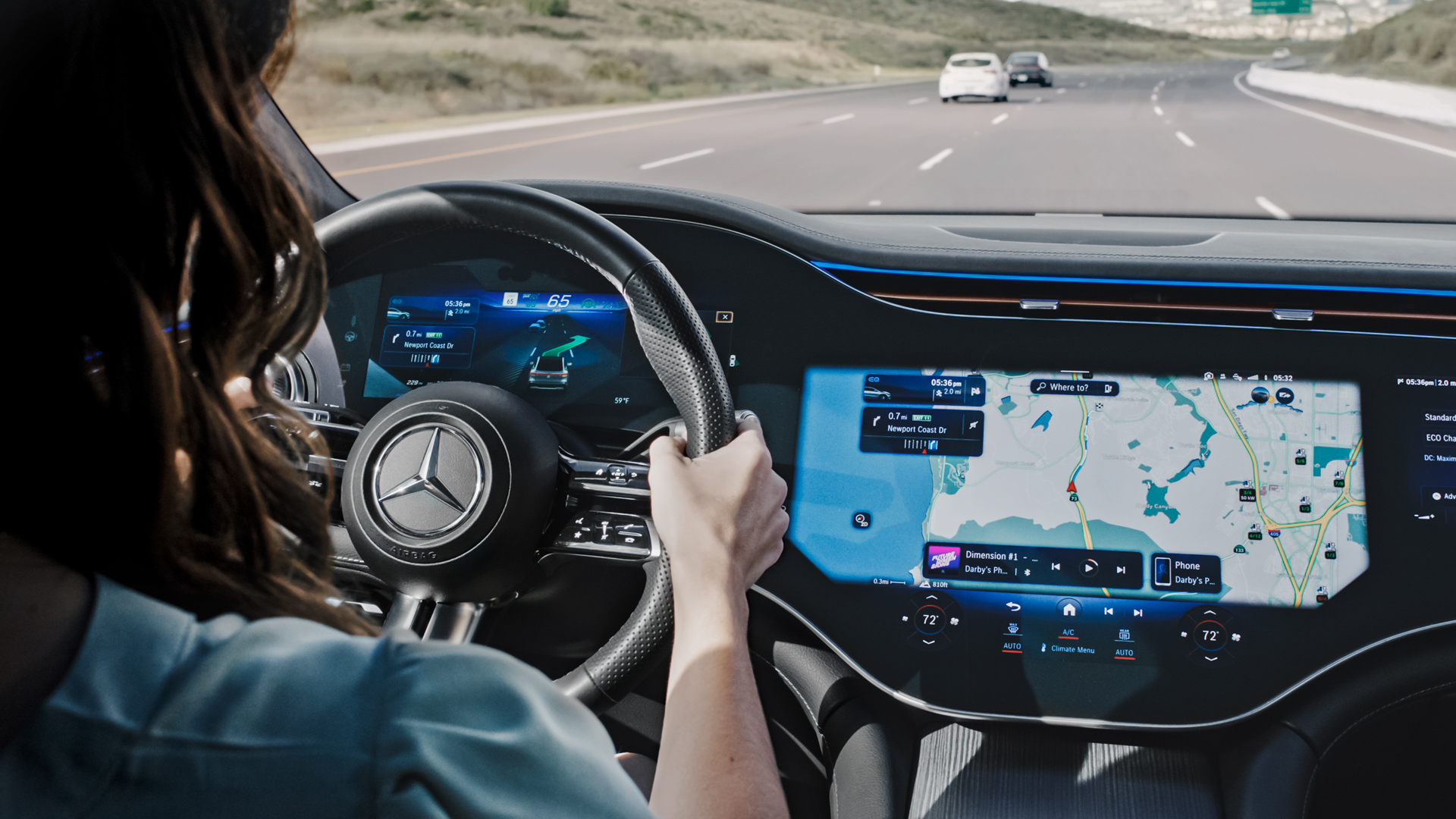

In a perfect world, Mercedes would make sure you never have to deal with pesky rock chips on the front of your car again. A patent filing recently granted by the German Patent and Trademark Office and discovered by CarMoses envisions a future where Mercedes equipped with self-driving features can leverage their lidar sensors to steer away from oncoming road debris.
The system would work by using lidar to generate a point cloud—a representation in data of where debris is located ahead of the car. Based on the information the sensors glean, the car would make a determination. If the particles ahead are like water spray or dust and not harmful to the body, nothing happens. But if they’re, say, stones, the vehicle will check to see if a lane change is possible, and execute one if so to avoid damage.
You might assume that Mercedes developed this technology for larger, more dangerous objects, but the patent specifically calls out rock chips and scenarios like following “unclosed vans” and “grave loaders” as a priority. The application also specifically mentions building this tech into “automated” vehicles. That could mean modern cars with Level 2 driver assistance functions, or truly autonomous cars that don’t exist yet—it’s unclear.

Could such a system really work? It seems almost impossible for sensors to determine whether a small object is flying at the vehicle, scan its surroundings for a safe lane change, and then steer into another lane all in the time it takes a rock to pop up and leave a mark in your paintwork. However, the system’s value may not be so much in preventing damage, but minimizing it.
Imagine prolonged situations, like when you’re on a stretch of road with more gravel than usual, or stuck behind a truck that’s leaving debris in its wake. And even in cases when the next lane over isn’t available, the system could simply increase the following distance to the ongoing source of debris ahead. Mercedes even raises the possibility of using microphones to determine the frequency of chips; once the pitter-patter dies down, the car will maintain its spot.
Still, I have to laugh at the image of Mercedes swerving all over the road just to avoid a couple of pebbles. Of course, the system probably wouldn’t work so chaotically, but if the maneuvers were as sudden as I’m imagining, new Mercs would terrorize the New Jersey Turnpike attempting to weave between all those construction vehicles.
Got tips? Send ’em to tips@thedrive.com